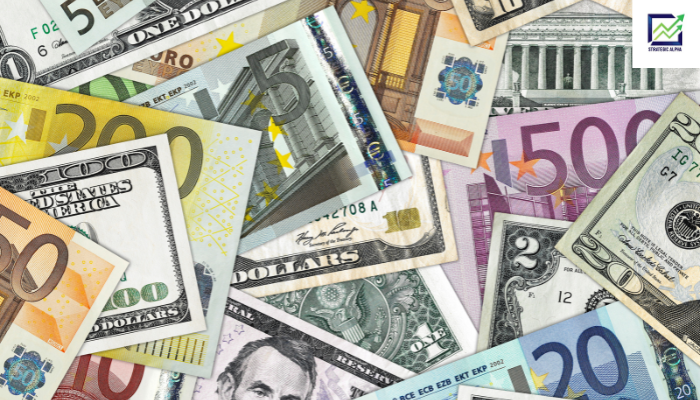Joel Greenblatt – American financier, writer, and manager of a hedge fund. In 1985, he founded the investment firm “Gowtham Capital.” From 1985 to 2006, this company delivered an astounding 40 percent annualised return over a period of 20 years. Joel employs Benjamin Graham’s value investing strategy, which entails purchasing undervalued businesses with long-term growth potential at attractive prices.
As a long-term investor, Joel Greenblatt often keeps the stocks in his portfolio for longer than a year. He thinks that while the stock market is very efficient over the long run, it can be unstable in the short term.
In 2005, Joel considered what gift he might give to his five children that would endure for a long time. It seemed like a wonderful idea to teach them how to create money for themselves, but he’d have to keep it easy enough for anyone to comprehend since his kids ranged in age from six to fifteen at the time. The outcome, The Little Book That (Still) Beats the Market, was an instant hit because it resonated with more people than just his kids with its straightforward formula for where to invest money.
Here are the key ideas discussed in the book that led to its immediate success by laying down strong fundamentals in the world of investing –
- Most companies’ stock market valuations fluctuate sharply over brief periods of time for no discernible reason.
What would a graph of the stock prices of IBM and General Motors over the previous five years look like? Most likely a reasonably straight, rising line indicating steady price increases. WRONG.
The line would be jagged, illustrating volatility that affects all stocks regardless of how profitable a company is, even though there would be a general trend of rising prices.
In his book, Greenblatt quotes the prices of shares from the newspaper, where the price of one share of General Electric was $35 the day before. The highest price that General Electric shares were sold over the last year was $53 per share, and the lowest price was $29 per share. For IBM, which was selling for $85 the day before, the range of prices per share over the last year has been between $55 per share at the lowest and $93 per share at the highest.
But why do stock prices for businesses fluctuate so much?
The share price of a business does not always reflect its true worth; it can be overpriced or undervalued. For better understanding, Greenblatt gives the example of one of the greatest stock market writers and thinkers, Benjamin Graham. To understand this, Graham equates the stock market with an emotionally disturbed individual, whom he calls “Mr. Market.” Mr. Market is subject to wild mood swings.
Even though Mr. Market is unpredictable, he genuinely wants to sell you stock in his company. On some days, he is tremendously upbeat and eager to sell at a high price, but on other days, he is depressed and offers his shares at a lower price since he thinks his company isn’t worth that much.
By purchasing stocks when Mr. Market is unhappy and selling his shares at a discount, you can take advantage of his temperament. You can then propose to sell the shares back to him at a greater price once he feels better.
- Utilise the earnings yield and return on capital while evaluating stocks.
As per Greenblatt, buy stocks when they are priced below the company’s genuine value and sell them when the share price is above it if you want to have a chance against Mr. Market.
Joel’s magic formula is primarily based on two standard metrics for assessing the quality of a stock – earnings yield and return on capital.
The first is earnings yield, which is essentially the amount of money one may expect to make annually from investing in a stock.
To calculate it, you’ll need the share price today and the earnings per share from the prior year. It would give you a predicted return in percentage or simply earnings per dollar.
For instance, if the company earned $0.85 per share last year and its stock is currently trading at $17, you would divide $0.85 by $17 to arrive at an earnings yield of 0.05. For every $1 you invest, you can expect to receive a return of 5%, or $5.
Return on capital is computed by dividing the company’s net profit for the previous year after taxes by the book value of the invested capital, which is the amount shown on their official balance sheet. This reveals the percentage of investment that the business actually profits from.
An ROC of 40% is excellent, for instance, if a $500,000 investment into a new steel production unit produces a $200,000 profit in its first year. Anything above 25%, in Joel’s opinion, is solid.
You will systematically invest in businesses that Mr. Market now undervalues if you buy shares of companies with a good return on capital at cheap prices.
- The Magic Formula
The earnings yield and ROC are combined into one measure via the magic formula. It begins with a list of the top 3,500 publicly traded firms in the US, such as the NYSE or the NASDAQ, and then rates those companies on a scale of one to 3,500 according to their ROC. The top slot goes to the company with the greatest return.
The same companies are then ordered according to their earnings yield, with the top spot going to the company with the highest earnings yield.
Both rankings are then combined. Consequently, a company that scored 181 on earnings yield but 1 on ROC would have a total score of 182. (one plus 182). Therefore, the businesses with the lowest overall score have the finest fusion of ROC and earnings yield.
The resulting single, ranked list identifies the businesses that do the best overall across both factors. Joel advises that you invest in the top 20 to 30 firms on that list and hold each stock for a full year.
Over time, the magic formula performs pretty well. A portfolio of roughly 30 equities with the best aggregate rankings returned, on average, about 30% each year between 1988 and 2004, whereas the market average was only about 12%. So, the secret recipe is effective.
Here are the top 10 companies in the Indian stock market screened and ranked as per Joel Greenblatt’s magic formula for investing:
- What Makes the Magic Formula Unattractive for Financial Managers?
Why isn’t the magic formula used by every investment manager if it is such a great way to make money?
The fact that the strategy doesn’t always outperform the market is one factor. The overall market average will typically outperform a portfolio constructed using the magic formula for five months out of every year. The same is true for 25% of all full-year intervals.
Even during the extraordinarily profitable period from 1988 to 2004, when a magic formula portfolio achieved an average annual return of 30%, it occasionally underperformed the market for two or more years in a row.
Professional money managers must constantly satisfy their clients, thus they cannot afford to perform below average for extended periods of time. No matter how successful a plan is in the long run, it can be challenging to stick with it for months or even years at a time. Despite their assurances that a profit will be realised in the future, a manager who is unable to regularly demonstrate to his customers a profit is quite likely to be sacked.
The simple conclusion is that while the magic formula performs admirably over the long run, most professional investors simply cannot afford to consistently outperform the market. However, you can. All it takes is a little patience to persevere through both the good and bad times.
Key Takeaways
- Paying a bargain price when you purchase a share in a business is a good thing. One way to do this is to purchase a business that earns more relative to the price you are paying than one that earns less. In other words, a higher earnings yield is better than a lower one.
- Buying a share of a good business is better than buying a share of a bad business. One way to do this is to purchase a business that can invest its own money at high rates of return rather than one that can only invest at lower ones. In other words, businesses that earn a high return on capital are better than businesses that earn a low return on capital.
- When selecting stocks, use the magic formula to select those from big, not small, businesses. Since fewer shares are available from smaller companies, even a little increase in demand will cause their share prices to rise. Therefore, it can be difficult for you to purchase their shares at a fair price. It is wiser to apply the secret technique to bigger businesses. A firm is considered large if its market value, calculated by multiplying the number of shares by the stock price, exceeds $50 million.
- You have a greater danger of deviating from the magic formula’s typical, healthy performance the fewer equities you own. The financial damage caused by a negative industrial event, such as a tanker spill, might be lessened by owning several shares. So it makes sense to diversify your stock portfolio.
- To start with, invest only 20 to 33 percent of the money you intend to invest during the first year. Buy five to seven top ranked companies. Repeat this process every two to three months until you have invested all of the money you have chosen to allocate to the magic formula portfolio. Remember to continue this process for several years, with a minimum holding period of one year per share.
The 40-year-old who has dabbled in investments his entire life but keeps switching from strategy to strategy without seeing major results; the 14-year-old who wants to learn how to make money; the person who wants a means to invest their money that runs (nearly) automatically; and anyone else – Joel Greenblatt’s Magic Formula for Investing is a perfect strategy for everyone.





